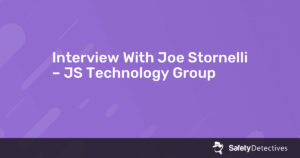Aviva Zacks of Safety Detective sat down with John Whaley, Founder and CEO of UnifyID. She asked him about his company’s challenges and solutions.
Safety Detective: What was your journey to cybersecurity and what do you love about it?
John Whaley: I went to MIT for undergrad where I majored in computer science and learned about how security is implemented in the real world. During my Ph.D. at Stanford, my thesis was on the static analysis of source code to automatically find bugs, security flaws, and security holes within the software.
I founded my first company out of Stanford which was in the security space, and now I’ve started a second company in the space as well.
SD: What motivated you to start UnifyID?
JW: What I found was that every time you type a key on the keyboard, it sends a network packet, the content of which was encrypted, but you could look at the timing between the packets and then, based on that, you could determine the timing of a user’s keystroke as they typed. So we built a demo of this solution for a security conference.
It turns out that if you know the timing of somebody’s keystrokes, then you can figure out with fair reliably what it is that they are typing because, as you move your fingers around a keyboard, the spacing between them and the duration of the time between keystrokes can leak the information about what you are typing.
We used Wireshark in the demo to capture a packet trace between the client and the server for some of these major products. Then we dumped that packet trace into a tool that would look at the timing between each of the packets, and then based on that, try to make a prediction about what the user was typing.
SD: What have been some challenges?
One of the challenges we had in building the demo was the fact that everyone has their own unique way of typing. And so, you could train a model that would work well for one person, but it wouldn’t necessarily work well for other people. That’s where we first got interested in noticing habits and idiosyncrasies that we could use for identity authentication. I noticed that passwords were a real challenge. Moving forward, we knew that the password alone was not going to be the way that people would be authenticated. While the password is not completely going away yet, we are starting to see its limitations and the need for additional authentication factors to provide secure digital experiences.
SD: Which industries use UnifyID and why?
JW: We have a lot of interest from the financial services industry because fraud is very costly in that area; they have a need for high security but there’s also a need for seamless user experience. The other areas are cryptocurrencies and crypto exchanges. Any type of case where there is a sharing economy where you need to authenticate not only the user, but also the worker, because the worker may not be a full-time employee of the company, and they want to make sure that the correct person is the one making a delivery or walking your dogs.
In many cases, people use our technology for streamlining physical access: for unlocking doors and cars for example, where you want security and you also want a seamless user experience.
SD: What do you feel is the worst cyberthreat today?
JW: The biggest cyber threat continues to be the attacks that go after the end-user. We’ve reached a point now where firewalls are no longer easy targets. It is now much easier and much more lucrative to go after individuals and try to steal their identity during the authentication process by tricking them into authenticating. This way the attacker hijacks the individual’s session to take over their account and then either transfer money out or use the hijacked account as a launch point for new attacks.
When I was young, hackers were hobbyists who were hacking for fun to prove something. There was not a lot of money in it, and it was not particularly malicious. Fraud is now a cybercrime and cyberattacking is now a large industry. There is a lot of money in it. The attacks have gotten very sophisticated. Attackers will steal someone’s identity, wreck their credit, and use that to launch different types of attacks to try to extract money out of even more people.
Until now, humans have always been the weak link in security—getting tricked into either clicking through a phishing site, entering their password in the wrong place, or getting socially engineered over a phone call. WIth UnifyID’s behavioral biometrics technology based on motion and the way each one of us behaves, humans become a strong link in security just by behaving the way they usually do.
SD: How important is multifactor authentication in the light of COVID-19 and the increase of employees working from home?
JW: The number of attacks has increased by almost 800% since the start of COVID-19. In the recent past, you were able to implicitly be authenticated due to the fact you were physically at the office, which takes security measures to let you into the building itself. Now, with everyone working remotely, suddenly there is a much greater need to remotely authenticate people as now a larger number of us works remotely.
One of the additional drivers for hacking is the current economic situation. In the current world environment, more and more people are out of work and lacking positive economic prospects. These conditions could drive more people to engage in hacking.
Source of Article

![5 Best Malware Removal + Protection Software [2021]: Top Anti-Malware Tools](https://nasniconsultants.com/wp-content/uploads/2021/02/5-best-malware-removal-protection-software-2021-top-anti-malware-tools-300x157.png)

